Want to learn about the main figures in A Course in Miracles? Watch my free 4-part series here
ForgiveNest Podcast Transcript: ACIM | On Love and the First 3 Miracle Principles - A Look At the Opening Lines of A Course in Miracles, with Alison Anton
This is a course in miracles. Please take notes. [ACIM CE Front-1.3:2]
You're listening to the ForgiveNest Podcast for A Course in Miracles, your place to explore ACIM topics in healing, meditation, and your special function in forgiveness. I'm Alison Anton.
This line is one of the first lines Dr. Helen Schucman took down on the morning of October 21st, 1965, which began the scribing of A Course in Miracles.
This is a course in miracles. Please take notes.
But it wasn't the first line.
I thought I'd speak today on the very first scribal passages that came through, based on Helen's original shorthand notes, which included the first three miracle principles.
Some of the beginning lines were omitted in the Blue Book during the obviously daunting editorial undertaking of A Course in Miracles. A half a million words is not a quick and easy edit! This was a years-long process and several editions came from it.
I was a sole student of the Blue Book from 1997 through 2024. (The Blue Book is a pet term for the Foundation of Inner Peace version, which is the most commonly read version of the Course.)
But in 2024, I discovered the Complete and Annotated Edition, or CE for short, and have switched to this edition as my study. I still refer to the Blue Book, but the CE is the one I use as the reference for my podcasts because it's based on the original shorthand notes of Helen Schucman, the scribe of the Course.
You can grab a copy of the Complete Edition (CE) or download the free web or mobile app at the Circle of Atonement website (CircleofA.org).
The CE is the same course; it's A Course in Miracles that Jesus dictated to Helen, but it contains 45,000 original words that were edited out of the Blue Book. We see this first of the adding back of words in the CE notably in Miracle Principle 3, and then it continues predominantly throughout many of the principles and through chapters 3 and 4.
We'll go through each of the first three principles here in a bit, but I thought I'd also say a few words about the order of the first lines that came in.
Weirdly, the very first line disappeared completely from the Blue Book version. That reads:
You will see miracles through your hands through me. [ACIM CE T-1:2]
That's a bold and beautiful statement. It's the very first line she scribed.
At this point, Helen had already been calling the voice "Christ", and it was clear she believed it to be the voice of Jesus. It's fascinating, isn't it, to imagine her taking down these very first shorthand notes, not realizing at all what was to come from them.
The first line is highly suggestive that Helen, and us, have the potential to be conduits for miracles, since they'll be coming through Jesus through our hands, presumably to and for other people. Now, of course, Jesus could have been spotlighting Helen here, potentially saying that miracles through his words will be coming through her hands.
But I'd like to encourage us to see it as if he's talking to all his students; that we should expect miracles will also be coming through our hands through him.
Also just a side note here: Many of us have made the assumption that the famous introduction to the Course was scribed first. It actually wasn't. Apparently some parts of it came early on and some parts came later on. The line that's often assumed to be the first line of the Course, but is not, is the notorious:
This is a course in miracles. Please take notes.
This line was originally scribed right after Miracle Principle one. Ultimately, the "please take notes" part was removed completely, but "This is a course in miracles" later ended up as the very opening line of the introduction.
I don't know about you, but that line, "This is a course in miracles. Please take notes", still gives me goosebumps. Although we, the students, aren't scribing the material, the line is so commanding of attention that it almost reads as a direct statement for all of us. I hear Jesus saying, "This is a course in miracles. Please pay attention."
So the sequence for the very, very beginning of the book from Helen's original notes actually flows like this:
You will see miracles through your hands through me.
Then she takes down the first miracle principle, which we'll cover in a bit.
Then she takes down:
This is a course in miracles. Please take notes.
From there, she continues through miracle principles two and three. And Jesus concludes three with specific instructions to review the first three principles by the end of the day.
So, before we get into principles one through three, and while we're on the topic of reviewing the principles, I'm going to see this as an opportunity to throw in some thoughts about reviewing the principles from time to time as part of our Course study.
Sometimes Course students say the principles are so cryptic that they only leave us little breadcrumbs. Well, they are breadcrumbs at first. But those seeming breadcrumbs do lead us somewhere we've never been—if we keep following the trail. Part of following the trail of A Course in Miracles requires looping back through the trail. And as we do that, we see different things.
The principles aren't so cryptic if we review them regularly. Reviewing the principles allows us to look back from where we are now in the Course with our current understanding of the Course. This is how we gain depth of knowledge.
Review is not a setback. Sometimes, as we study the Course, we're trying so hard just to turn the page so we can get off the page we're on, just so we can get on to the next page or on to the next section or chapter. And the last thing we want to do is break that stride toward the accomplishment of finishing the book, just so we can accommodate a redundant review period.
But, this is usually just resistance. It's the ego not wanting us to gain depth in understanding. It is an accomplishment when we do get through, but our depth of understanding is simply much more important. And will be that much deeper if we allot time to refer back to the principles from time to time.
And this is the perfect time!
Let's review Jesus's Miracle Principles 1 through 3, and we'll pick up some breadcrumbs along the way to help us find deeper meaning in them.
Miracle Principle number one:
The first principle of miracles is that there is no order of difficulty among them. One is not "harder" or "bigger" than another. They are all the same. [ACIM CE T-1.1.1]
Even for quote unquote "older" students who've been reading the Course material for some time, this concept is, yeah, familiar, but still seemingly impossible for our minds to grasp.
He starts us right out of the gate by basically saying there are no levels of difficulty in any miracle. He's posing a question for us here. It's a breadcrumb to follow. Jesus does give us the answer to this question in Principle 3, which is just around the corner, but we can start to ask some questions about it now.
How could it be possible that there are no order of miracles? And if we are to perform miracles, who, or what, within ourselves has the ability to make no distinctions of difficulty?
"...There is no order of difficulty among them. One is not harder or bigger than another. They are all the same."
We'll see what Jesus has to say about this in Principle 3, but let's first read Principle 2:
Miracles in themselves do not matter. They are quite unimportant. [ACIM CE T-1.2]
We're left with an even bigger blind spot with this one. Again, it's like he's setting out another breadcrumb for us. We have to think, "How could a miracle not matter?" It seems counterintuitive to a book called A Course in Miracles for miracles not to matter, right?
The Blue Book does try to remedy this particular blind spot by cutting and pasting a subnote from Principle 3 as an additional sentence in Number 2. We'll come back to that note in a sec because it's totally important. And that's why it didn't get cut and deleted completely out of the Blue Book.
But the original dictation was simply this:
Miracles in themselves do not matter. They are quite unimportant.
It leaves us pondering for sure.
Let's look to Principle 3. Then we'll take a look at the important note that follows it and circle around to how it answers our questions.
Principle 3 reads:
Miracles occur naturally as expressions of love. The real miracle is the love that inspires them. In this sense, everything that comes from love is a miracle. [ACIM CE T-1.3.1]
We have a huge statement here. If we pick it apart, which I love to do, basically he's saying you can't have a miracle without love. Because love is what inspires them. Love is the wellspring for the miracles that come from it. Without love, we don't have a miracle.
I'll read three again:
Miracles occur naturally as expressions of love. The real miracle is the love that inspires them. In this sense, everything that comes from love is a miracle.
He's essentially answered the open questions of number one and number two here within Principle 3. Our keyword here is "love", and he gives us another keyword in the last sentence of the subnote from the CE that follows this principle. It reads:
…The only thing that matters is the source, and this is far beyond human evaluation. [ACIM CE T-1.3.2:4]
I'll read the full subnote in a bit, but let's stay on track with this: "...The only thing that matters is the source..." This is that very important subnote I referred to earlier. It's important because it contains that second keyword to help us understand our questions from the first two principles. The keyword here is, "source". And the first was love.
"...The real miracle is the love that inspires them." And... "The only thing that matters is the source."
Helen originally capitalized Source in her notes. And although the text doesn't say this explicitly, I think it's safe to say Jesus is referring to God as the Source. Those of us studying the Course could easily draw that connection, or possibly to the Holy Spirit, or to ourselves as Christ, Who are both in direct and complete communication with God.
But my point here, what's important, is that right out of the gate of A Course in Miracles, the very first thing he's getting us to think about is:
God is love, and His expression of love is the miracle.
If love is the very first thing Jesus talks about in regard to miracles, and also as the opener for the entire course, love should be the very first thing that comes to every Course student's mind when we think of the word "miracle". It's the first thing he mentions about miracles, so it should really be the first thing we think of.
Miracles occur naturally as expressions of love.
And since we're bringing this all together now, I'll read Principle 3 here again and also include the first subnote in full:
Principle 3:
Miracles occur naturally as expressions of love. The real miracle is the love that inspires them. In this sense, everything that comes from love is a miracle.
Principle 3 subnote:
This explains their lack of order. All expressions of love are maximal. This also explains why miracles in themselves do not matter. The only thing that matters is the source, and this is far beyond human evaluation. [ACIM CE T-1.3.2]
Now that we know that the source is love, and that love is God, I want to read the first two principles again too, and break them down. We have our keywords now to help us unlock the original questions we had about them.
Principle 1:
The first principle of miracles is that there is no order of difficulty among them. One is not harder or bigger than another. They are all the same.
Our question was, "How could it be possible that there are no order of difficulty in miracles? And who within ourselves has the ability to make no distinctions of difficulty?
Well that answer, as we know, is God, who is love.
"All expressions of love are maximal", as Jesus says in his notes, because all expressions of God are maximal. How could God's love be anything other than maximal? Even if the one that performs the miracle is Christ, or the Holy Spirit, or Jesus within us, all these remain in direct communication with God.
The miracle simply does what it needs to do from love. As an expression of love from the Source of all, it is maximal.
Principle 2:
Miracles in themselves do not matter. They are quite unimportant.
Now that we know the only thing that matters in miracles is their Source, which is God, who is love, we can make two big deductions about why miracles in themselves do not matter.
One is because miracles by themselves do not matter. Without God's love, there is no miracle. God is the means for the miracles that transpire. The second piece, and probably the biggest element in this statement, is that God is also what the miracle is for. God is not only the means, He is the end. In other words, the miracle is the expression of love that returns us to love.
In essence, it's the tool God gave us to bring us back to knowing Him. When all is said and done, when the tool of the miracle has been used maximally, we've accomplished the one purpose of the tool, and the tool is no longer needed.
And this—if we choose to follow the breadcrumbs—is what A Course in Miracles would have us accomplish. The purpose of the Course is to teach us how to use miracles, the expressions of love, to return us to God's love.
Granted, we've set up some significant roadblocks on this trail to keep us from getting back to God, but as we've learned, there's nothing hard or big about it. What makes it seem impossible is our mind that blocks it. And in a nutshell, those blocks are what the Course is here to help us undo.
How I'd like to end our session today is to read through the first three Miracle Principles again to help us trail back again so we can pick up the breadcrumbs.But let's imagine them not as crumbs, but as cairns of light that Jesus himself has laid out for us.
You can close your eyes if you like.
Miracle Principles 1-3
You will see miracles through your hands through me.
The first principle of miracles is that there is no order of difficulty among them. One is not harder or bigger than another. They are all the same.
Miracles in themselves do not matter. They are quite unimportant.
Miracles occur naturally as expressions of love. The real miracle is the love that inspires them. In this sense, everything that comes from love is a miracle.
This explains their lack of order. All expressions of love are maximal. This also explains why miracles in themselves do not matter. The only thing that matters is the source, and this is far beyond human evaluation. …
And I'll leave you with that to ponder.
Thanks for listening to the ForgiveNest Podcast.
I'm Alison Anton. It was great talking to you.





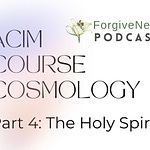
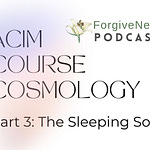
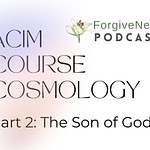


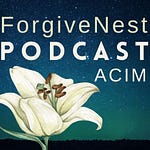
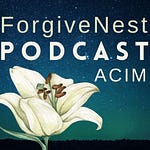
Share this post